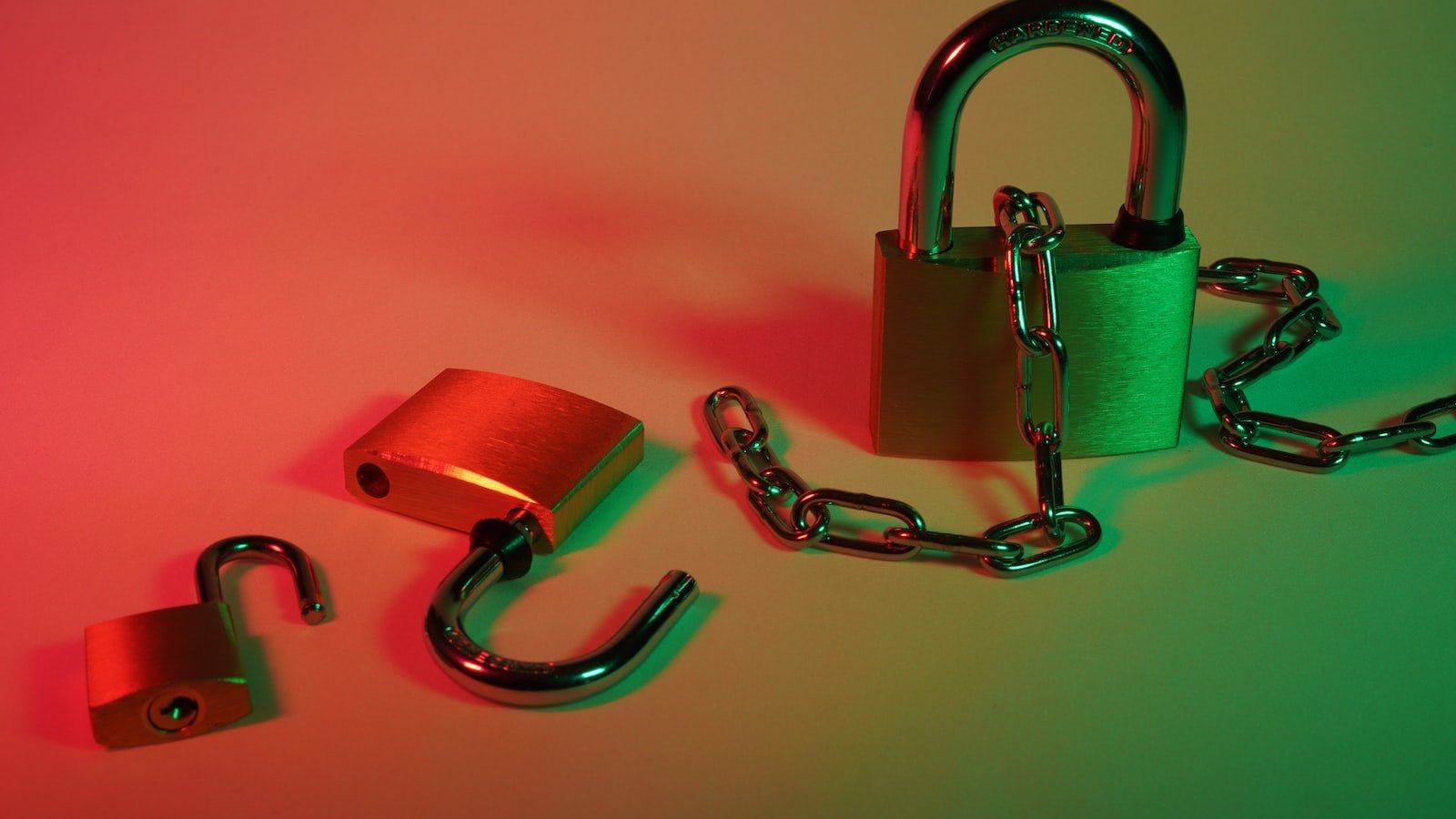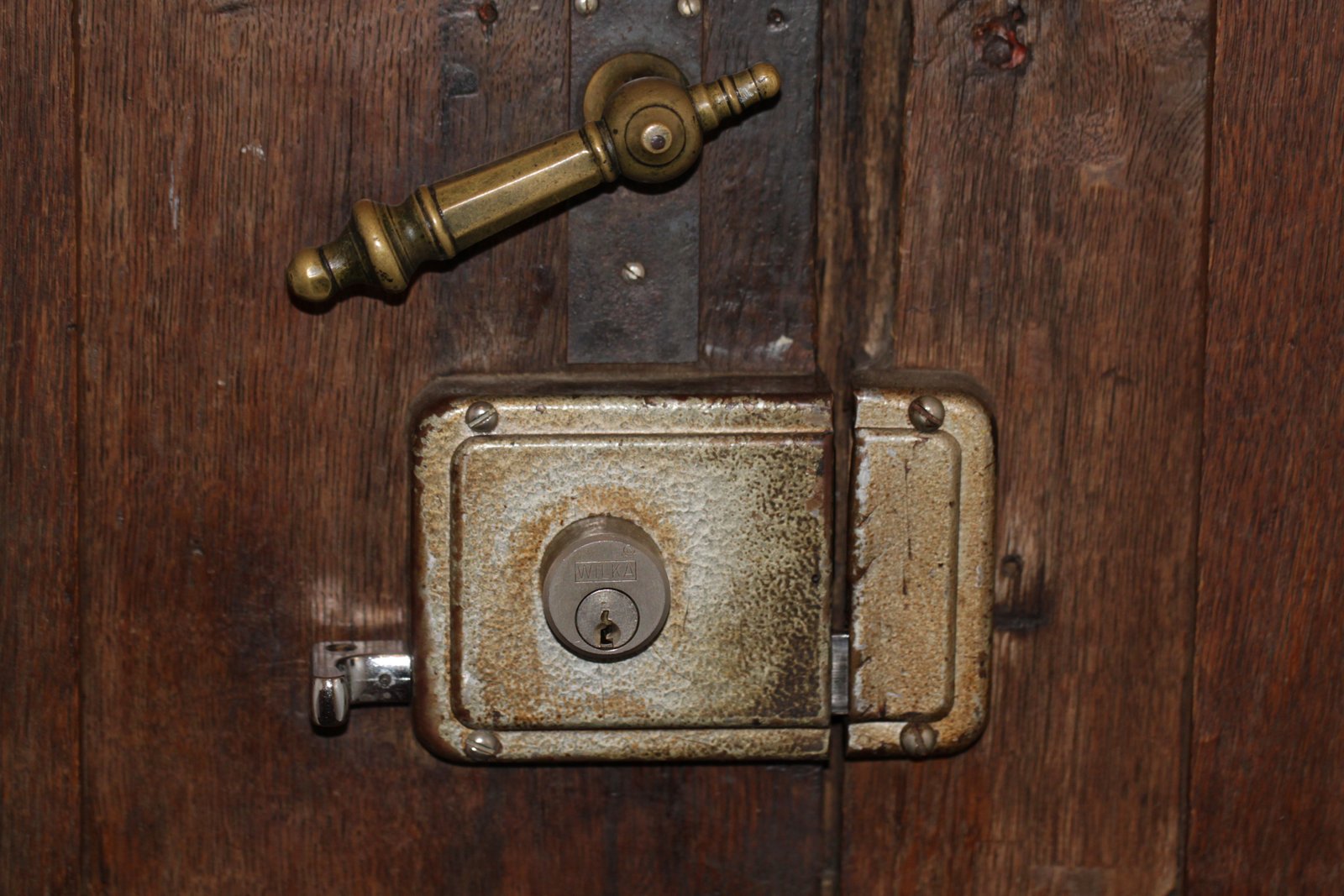Have you ever wondered how a simple latch can securely keep your doors barricaded? Enter the rim latch lock, a hidden hero that transforms your humble door into a formidable fortress. This unassuming yet reliable mechanism might seem like a mystery, but fear not! We are here to demystify the inner workings of the rim latch lock in a step-by-step guide. So, prepare to unlock the secrets behind this ingenious device as we delve into the enchanting world of latch mechanics. Brace yourself for a captivating journey through the mechanisms that ensure our privacy and security with every click of a key.
Table of Contents
- Understanding the Anatomy of a Rim Latch Lock
- Exploring the Mechanism Behind the Rim Latch Lock
- Step-by-Step Guide to Operating a Rim Latch Lock
- Tips for Proper Maintenance and Care of Rim Latch Locks
- Enhancing Security: Recommended Upgrades for Rim Latch Locks
- Q&A
- In Retrospect

Understanding the Anatomy of a Rim Latch Lock
Rim latch locks are widely used in residential and commercial spaces, providing a convenient and secure way to keep doors closed. To truly comprehend how these locks work, it’s essential to delve into their intricate anatomy.
Anatomy of a Rim Latch Lock:
- Lock Body: The main component housing the lock mechanism, typically made of sturdy metal for durability.
- Latch Bolt: A spring-loaded bolt that extends or retracts when the door is closed or opened, respectively.
- Strike Plate: A metal plate affixed to the doorframe, offering a stable surface for the latch bolt to secure into when the door is closed.
- Keyed Cylinder: The part through which a key is inserted to lock or unlock the door.
- Thumbturn: Located on the inner side of the door, it allows for easy locking or unlocking without requiring a key.
- Escutcheon Plate: This decorative plate surrounds the cylinder and thumbturn, giving the lock a finished look.
- Backset: Refers to the distance between the center of the lock cylinder to the edge of the door, determining the lock’s position on the door.
- Faceplate: A metal plate attached to the edge of the door, providing support and protection for the latch bolt and lock body.
Understanding the various components of a rim latch lock helps in troubleshooting issues, choosing the right lock for a particular setting, and performing necessary maintenance or repairs. By familiarizing yourself with these elements, you’ll have a deeper appreciation for the functionality and complexity behind this everyday security device.

Exploring the Mechanism Behind the Rim Latch Lock
The rim latch lock is a fascinating piece of hardware that has been used for centuries to secure doors and gates. Its simple yet effective design consists of a latch bolt that extends into a strike plate, holding the door shut. But have you ever wondered how this mechanism works?
At its core, the rim latch lock operates through a combination of mechanical movements. When the door is closed, the latch bolt is pushed into the strike plate, preventing the door from being opened. This is achieved through the action of a lever or a knob on the latch, which engages with the strike plate’s receiver.
To release the latch bolt and open the door, a key or thumb turn is typically used. This turns a cylinder inside the lock mechanism, causing the latch bolt to retract from the strike plate. It’s worth noting that some rim latch locks may also include additional security features, such as deadlocking or anti-tamper mechanisms, enhancing their effectiveness.
In summary, the rim latch lock’s mechanism is an ingenious solution for securing doors and gates. Its simplicity and reliability have made it a popular choice for both residential and commercial applications.
Step-by-Step Guide to Operating a Rim Latch Lock
Here is a comprehensive guide that will walk you through the process of operating a rim latch lock:
- Step 1: Prepare the Door
- Ensure that the door is closed securely and aligned with the door frame.
- Check for any debris or obstructions near the latch mechanism and remove them if necessary.
- Step 2: Locate the Latch
- Identify the rim latch on the edge of the door. It is a metal piece that extends into the door frame.
- Inspect the latch for any damage or signs of wear. If the latch is faulty, consider replacing it before proceeding.
- Step 3: Engage the Latch
- Press down the latch handle or knob to disengage the lock.
- With the latch disengaged, gently pull or push the door to open it.
- Step 4: Lock the Door
- To lock the door, close it tightly so that the latch aligns with the door frame.
- Push the latch handle or knob upwards until you hear a distinct click or feel the latch engaging with the frame.
By following these steps, you will be able to effortlessly operate a rim latch lock, ensuring the safety and security of your door.
Tips for Proper Maintenance and Care of Rim Latch Locks
Rim latch locks are a reliable and convenient way to secure your doors, but like any mechanical device, they require regular maintenance to ensure their continued effectiveness. Here are some helpful tips to keep your rim latch locks in optimum condition:
- Keep it clean: Regularly clean the surface of your rim latch lock using a mild detergent and a soft cloth. This will help prevent the accumulation of dirt and debris that can hinder its smooth operation.
- Lubricate regularly: Apply a small amount of graphite lubricant or silicone spray to the keyhole and latch mechanism of your rim latch lock. This helps to reduce friction and ensures smooth and effortless locking and unlocking.
- Inspect and tighten screws: Periodically check all the screws and bolts on your rim latch lock to ensure they are secure. If you notice any loose screws, gently tighten them using the appropriate tools.
- Test the functionality: Regularly test the turning mechanism and latch operation of your rim latch lock to make sure they are working smoothly. If you notice any sticking or grinding sensations, it may indicate the need for a professional repair.
- Protect from harsh weather: If your rim latch lock is exposed to extreme weather conditions, consider installing a protective cover or awning to shield it from excessive moisture, UV rays, and temperature fluctuations. This can help prolong its lifespan.
By following these simple tips, you can ensure your rim latch lock remains in excellent condition, providing reliable security for your doors. Remember, a well-maintained lock is a key component of a secure home!
Enhancing Security: Recommended Upgrades for Rim Latch Locks
When it comes to ensuring the safety of your property, taking measures to upgrade your rim latch locks is a wise decision. Rim latch locks, although commonly used, may not provide the highest level of security on their own. By making a few recommended upgrades, you can significantly enhance the protection of your premises.
To bolster the security of your rim latch locks, consider these recommended upgrades:
- Add a Deadbolt Lock: Deadbolt locks are highly effective in preventing forced entry as they provide an extra layer of protection. Installing a sturdy deadbolt lock alongside your rim latch lock will make it much more difficult for potential intruders to gain unauthorized access.
- Upgrade to a High-Security Cylinder: The cylinder is the heart of any lock system, and opting for a high-security cylinder can greatly increase the resistance to picking, bumping, or drilling. Look for cylinders with features like restricted keyways and anti-pick pins to enhance the overall security of your rim latch lock.
- Increase Door Reinforcement: Reinforcing your door can make it more resilient to forced entry attempts. Consider adding a door reinforcement plate or a security strike plate to reinforce the area around your rim latch lock. This will reinforce the door frame, making it more resistant to kicking or prying.
- Install Security Hardware: Enhancing your rim latch lock’s security can also involve installing additional hardware such as door viewers, security chains, or security hinges. These extra measures can provide an added layer of protection and peace of mind.
By implementing these recommended upgrades, you will significantly improve the security of your rim latch locks, making them more resilient against potential threats. Remember, investing in the right enhancements today can lead to a safer and more secure future for your property.
Q&A
What is a rim latch lock?
A rim latch lock is a type of lock that is mounted on the surface of a door, rather than being inserted into the door like a deadbolt. It consists of a latch that extends from the lock and is controlled by a key or a thumb turn.
How does a rim latch lock work?
When the key is inserted into the lock and turned, it rotates a cylinder inside the lock. This rotation activates a set of levers that align to release the latch. The latch then moves in or out, depending on whether the door needs to be locked or opened.
What is the purpose of a rim latch lock?
The main purpose of a rim latch lock is to secure a door by preventing unauthorized access. It provides a simple yet effective way to lock a door, ensuring the safety and privacy of the space it protects.
Can a rim latch lock be unlocked from the inside without a key?
Yes, many rim latch locks come with a thumb turn mechanism on the inside. This allows the lock to be easily unlocked from the inside without the need for a key, enabling quick and convenient exit in case of an emergency.
Are rim latch locks secure?
Rim latch locks offer a certain level of security, but they are generally considered less secure than deadbolts. Since rim latch locks are surface-mounted, they can be vulnerable to forced entry attempts. However, choosing a high-quality lock and employing additional security measures can enhance their level of security.
What are some common issues with rim latch locks?
Over time, rim latch locks may develop problems such as sticking, misalignment, or difficulty turning the key. These issues can typically be resolved by cleaning the lock, lubricating the moving parts, or adjusting the strike plate on the door frame.
Can a rim latch lock be installed on any type of door?
Rim latch locks are designed to be installed on doors that have a flat surface on the inside where the lock mechanism can be attached. They can be used on wooden, metal, or composite doors, making them versatile and suitable for various door types.
In Retrospect
As we bid adieu to our comprehensive step-by-step guide on how a rim latch lock works, we hope you have found yourself enlightened on the marvels that lie behind this seemingly simple security device. Through intricate mechanisms and elegant simplicity, rim latch locks confidently safeguard our homes, granting us a peace of mind that only true craftsmanship can provide.
By understanding the symbiotic relationship between the key, the cylinder, and the latch, you have delved into the inner workings of this silent yet steadfast guardian. As we draw this article to a close, we invite you to appreciate the magic that unfolds each time you insert a key and turn its dainty teeth. A mesmerizing dance commences within the lock, aligning springs, levers, and pins as if they were engaged in an artful ballet.
Remember, as you interact with a rim latch lock in your everyday life, take a moment to marvel at the engineering marvels that keep your home secure. Appreciate the perfect balance of strength and grace, offered by a mechanism that has withstood the test of time and evolved alongside the ever-advancing world of security technology.
So, next time you hear the satisfying click of a rim latch lock engaging, know that you are witness to a symphony of design, a testament to human ingenuity. Embrace the serene reassurance it brings, for behind that lock lies the sheer brilliance of meticulous engineering.
With this newfound knowledge, may you appreciate the seemingly ordinary objects that illuminate the extraordinary in our world. Farewell for now, and may your lock encounters always be accompanied by a sense of wonder and appreciation for the intricate mechanics that safeguard our places of refuge.
As an affiliate, my content may feature links to products I personally use and recommend. By taking action, like subscribing or making a purchase, you’ll be supporting my work and fueling my taco cravings at the same time. Win-win, right?
Want to read more? Check out our Affiliate Disclosure page.
